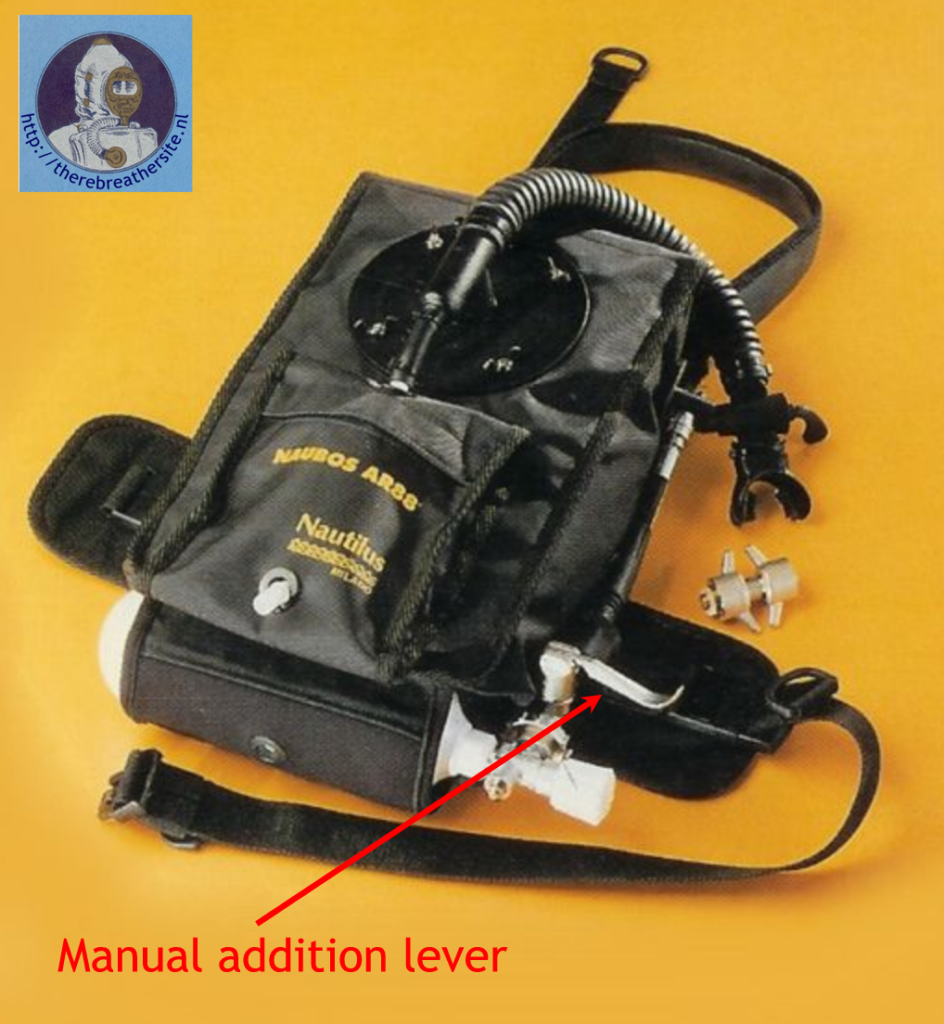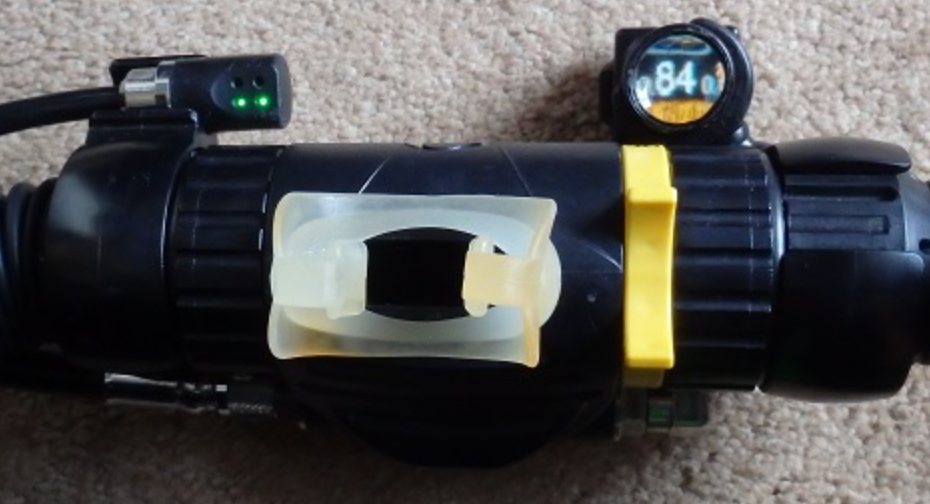
Manual addition of oxygen in oxygen rebreathers
The use of manual addition in oxygen rebreathers is the oldest form of adding oxygen to the loop. When the diver is breathing, the oxygen is metabolized and the counter lung volume will decrease. To keep the counter lung filled oxygen have to be added. In the older models the diver had to press a button to add oxygen. Modern methods of adding oxygen to the loop use the principle of constant mass flow or on demand systems. A disadvantage of the manual system was the risk of a malfunction of the addition system. The diver would surface due to a too big volume in the loop or suffer a lack of oxygen. Both are specially not wanted for hidden operations.
During the dive, the breathing volume will decrease due to the shrinking counterlung. If the gas in the lung consists mainly of oxygen, the diver will notice breathing resistance. A great danger arises if the diver has not flushed properly. The oxygen in the counterlung will be depleted, but the volume still offers sufficient gas for breathing due to the presence of nitrogen. The oxygen content may then become too low and the diver may become unconscious due to hypoxia (lack of oxygen). When diving frequently with an oxygen rebreather it is strongly recommended to install a PO2 meter on the system so that the partial pressure of oxygen can be read every time.




Manual addition
The use of manual addition in oxygen rebreathers is the oldest form of adding oxygen to the loop. When the diver is breathing, the oxygen is metabolized and the counter lung volume will decrease. To keep the counter lung filled oxygen have to be added. In the older models the diver had to press a button to add oxygen. Modern methods of adding oxygen to the loop use the principle of constant mass flow or on demand systems. A disadvantage of the manual system was the risk of a malfunction of the addition system. The diver would surface due to a too big volume in the loop or suffer a lack of oxygen. Both are specially not wanted for hidden operations.
During the dive, the breathing volume will decrease due to the shrinking counterlung. If the gas in the lung consists mainly of oxygen, the diver will notice breathing resistance. A great danger arises if the diver has not flushed properly. The oxygen in the counterlung will be depleted, but the volume still offers sufficient gas for breathing due to the presence of nitrogen. The oxygen content may then become too low and the diver may become unconscious due to hypoxia (lack of oxygen). When diving frequently with an oxygen rebreather it is strongly recommended to install a PO2 meter on the system so that the partial pressure of oxygen can be read every time.





Therebreathersite was founded by Jan Willem Bech in 1999. After a diving career of many years, he decided to start technical diving in 1999. He immediately noticed that at that time there was almost no website that contained the history of closed breathing systems. The start for the website led to a huge collection that offered about 1,300 pages of information until 2019. In 2019, a fresh start was made with the website now freely available online for everyone. Therebreathersite is a source of information for divers, researchers, technicians and students. I hope you enjoy browsing the content!
